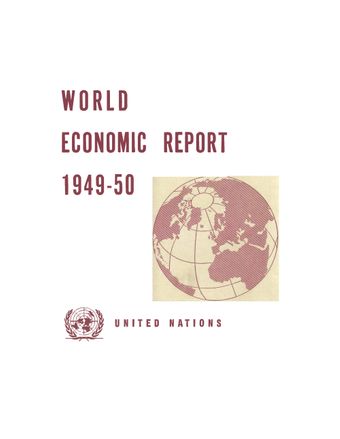- Home
- Books
- World Economic Report 1949–1950
- Chapter
Japan

- Author: United Nations
- Main Title: World Economic Report 1949–1950 , pp 54-57
- Publication Date: March 1950
- DOI: https://doi.org/10.18356/1cffa646-en
- Language: English
In spite of the monetary reform of March 1946, strong inflationary pressures continued to be felt in Japan from 1946 to 1948, mainly because large budget deficits continued and because the supply of essential consumer goods remained at a much lower level than before the war. The rationing system was merely partial, and was effective only for some essential commodities, such as rice. Most commodities were price controlled but, in general, not rationed; some commodities were legally sold at free prices. Owing to acute shortages of goods and to ineffective controls, there was a substantial black market in commodities subject to control; black market prices were several times higher than controlled prices. Throughout the period, prices—both controlled and black market—and wages rose continuously. The weighted index of official, free and black market consumer prices increased about fourfold from the middle of 1946 to the end of 1948.
-
From This Site
/content/books/9789210452786s003-c005dcterms_title,dcterms_subject,pub_keyword-contentType:Journal -contentType:Contributor -contentType:Concept -contentType:Institution105



